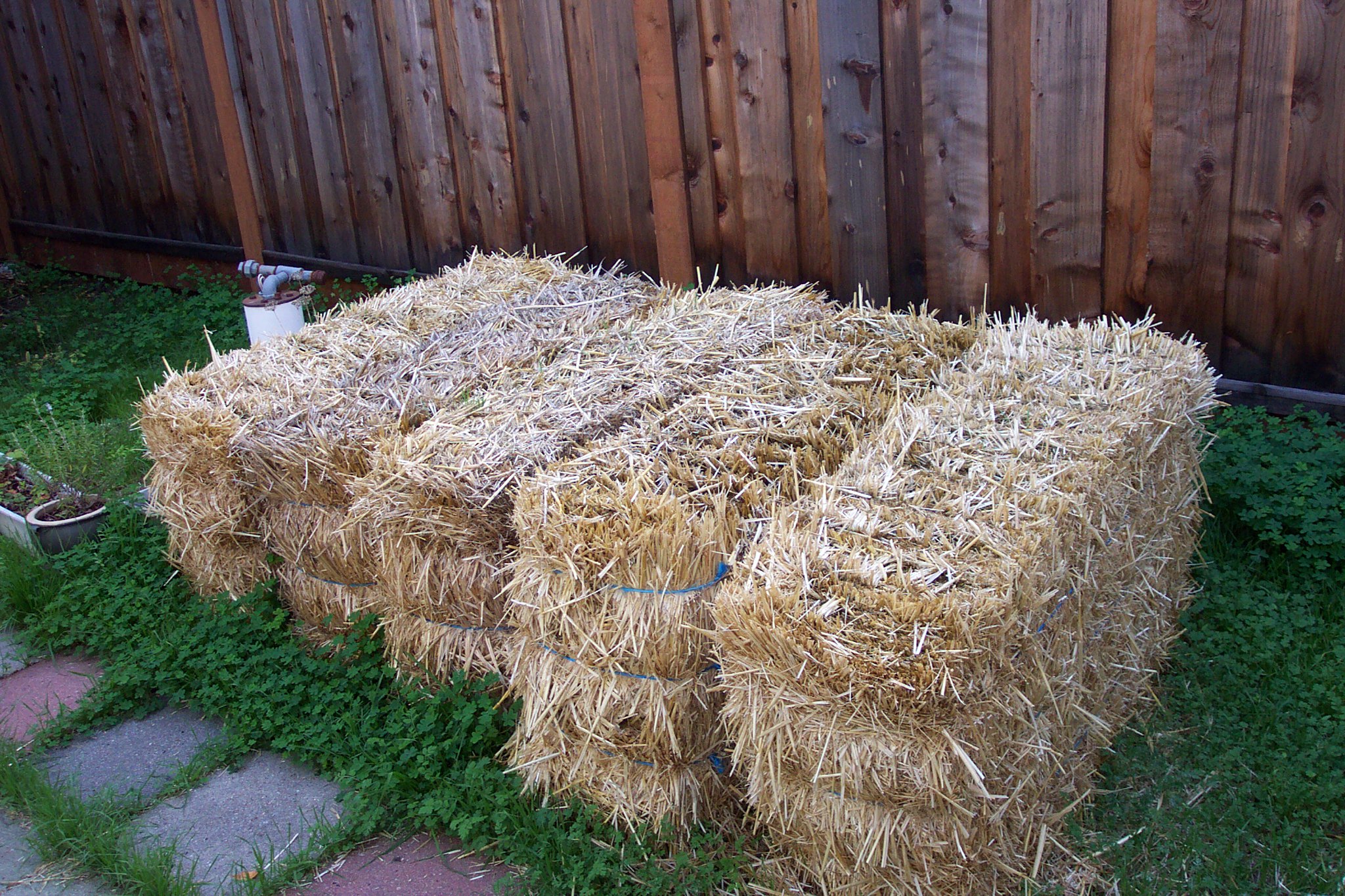A lack of space needn’t keep you from a bounty of fresh produce if you turn to straw bales for planting edible gardens.
Straw bales take up little space and produce almost anything you can grow in an inground garden, said Brooke Edmunds, a horticulturist with Oregon State University Extension Service. The rectangular straw bales bring gardening up to a more manageable height for people with disabilities. And if your soil is impossibly compacted clay, straw bales come to the rescue by providing an organic raised bed without the materials, labor and permanence of built ones.
Before heading out to feed and seed stores, where you’re most likely to find straw bales for sale, make sure that what you buy is straw rather than hay. Hay has an abundance of seeds that will sprout into weeds, Edmunds said. Even when buying straw bales, it’s a good idea to find out if it is weed-free.
When you get straw bales home, locate them where they’ll stay. The bales get quite heavy once watered. For most vegetables, a full-sun spot is required, though lettuces, greens, cilantro, dill and parsley will appreciate light shade during the heat of summer. If you don’t have areas of light shade available, place the plants on the north side of taller plants that will provide protection from the hot sun.
It’s optional, but once you get the bale moved to an appropriate spot, you might want to use stakes or rebar stuck into the ground around the outside to keep it stable. The straw bales come wrapped in wire, which will also help keep the bale from slumping into a pile of compost.
“The straw bales will heat up and start to decompose,” Edmunds said. “Don’t plant into fresh bales because it gets hot. Eventually you’ll have the beginnings of a compost pile.”
It takes 10 days to two weeks to “condition” the bale. First saturate with water until it runs out of the bottom. Sprinkle the top with about a cup of high-nitrogen fertilizer like conventional lawn fertilizer or blood meal, and water it in. Look for the three letters and numbers on the label: The first is N for nitrogen. Look for a fertilizer that has a higher number for N than for the two other letters, P for phosphorus and K for potassium.
When the inside of the bale has cooled down to about the same as the ambient temperature, it’s ready to for planting, Edmunds said. To determine the temperature, stick a soil thermometer into the center of the bale. Or, use your hand to see if it has cooled sufficiently. Don’t get impatient or plants will burn in the hot bale.
Cover the top with 2 to 4 inches of soil. Use bags of garden soil rather than potting mix. Water tends to run off potting soil, which also doesn’t hold as much moisture as garden soil.
Either seeds or seedlings can be planted in a straw bale garden. Good choices for seeds are cucumbers, beans on a trellis, smaller squash and melons, and annual herbs. Use starts for plants like greens, lettuces, peppers and eggplants. Tomatoes will work, too. Determinate (ripen at once) are best because they stay smaller than indeterminate varieties. For fruit, strawberries are a good option.
Trickier to grow are root crops like carrots, beets or potatoes, and tall ones like corn, which will fall over. To grow these crops, consider using two straw bales stacked one on top of the other.
“You can plant some things on the side of the bale but it’s hard to water the sides,” Edmunds said. “It might be a limitation to plants being happy, so be careful to keep it moist enough.”
To plant seedlings, dig out a little space, put the plant in, add some soil and tamp it down. For seeds, plant the same as you would in the garden, about 2 to 4 inches deep depending on the vegetable. Don’t over plant; you don’t want your small garden to be crowded, which can lead to diseases. Be sure to water after planting.
Check the bale every day to see if it needs water. During the dry summer period, it will most likely have to be watered once a day as you would container plants. Using a soaker hose or drip system makes life easier, but isn’t necessary.
Fertilize as you would container-grown plants using an all-purpose vegetable fertilizer – organic or otherwise. Up the rate when you’re watering more frequently during hot spells as the fertilizer will leach out quicker.
Straw bale gardens are susceptible to the same pests and diseases any garden, but slugs are particularly problematic. Keep an eye out.

